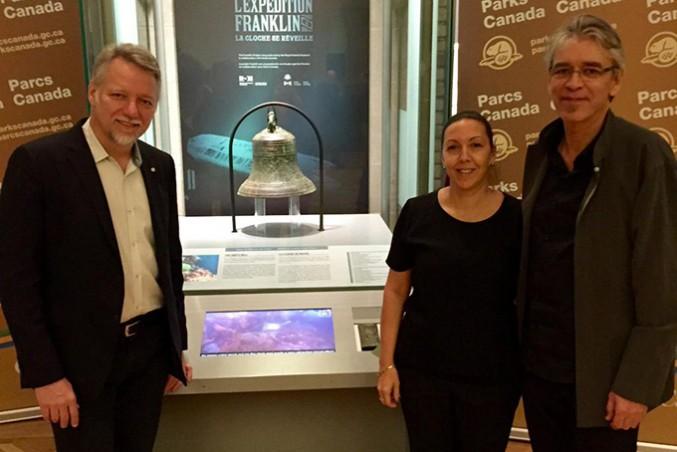By Josie Mills
Ryerson alumni, award-winning designer David Didur and photographer Edward Burtynsky have teamed up recreate history with 3D printing technology.
The pair has successfully recreated of bell from the HMS Erebus, a ship that was abandoned during the Franklin Expedition in 1848. The wreckage was rediscovered in Sept. 2014 after a long search on the ocean floor by Parks Canada. The replica is now on display at the Royal Ontario Museum.
“The Franklin outreach project has been a great initiative for us and the 3D replica bell is the star attraction,” said Janet Carding, Director and CEO of the Royal Ontario Museum.
The bell is made up of 4,000 printed layers of a plaster-like material, which is held together with resin.
“It’s a story that has been a mystery and has captivated people for 150 years. Now the mystery is solved for the first time after 17 expeditions to find it. It is amazing to finally discover it and bring a piece of it up out of the water and out on display. It was fantastic and like all things, it is about telling a great story,” Didur said.
The process of creating the bell was not easy and took a lot of planning and co-operation through Think2Thing, Canada’s premier 3D printing atelier.
After the bell was found, it was brought from the ocean floor and kept in seawater. It was then taken to Parks Canada in Ottawa. Two people from Think2Thing visited Parks Canada then we travelled to parks Canada. The team had to scan the bell and then collect the data from the scan.
The data was brought back and processed in the computer environment and 3D modeled and then that information was sent to the 3D printers to print the bell.
After printing, the bell went into a series of post-production techniques to bring out the colour, hide the seams and to generally finish the bell. The goal was to make sure it looked like a the original bell and it appeared to be made out of bronze.
“It was a great experience, this is what we live for. The public response has been incredible, it’s been very good for our company. People are really excited about seeing it,” says Didur.
Think2Thing worked with Ryerson researchers to figure out a flaw in 3D printing technology.
“It has a fault, in terms of colour printing, it isn’t really evolved enough to have the same colour management system like photography does. That is a frustrating part of the technology, so it was help of Ryerson researchers assistance to help us develop a way to more accurately print the colour and use the technology to be able to pull this off successfully”, says Didur.
3D printing has already changed the game when it comes to design and according to Didur, “3D printing will have a profound impact on the design world.”
The display is available for viewing until mid March 2015.










Leave a Reply